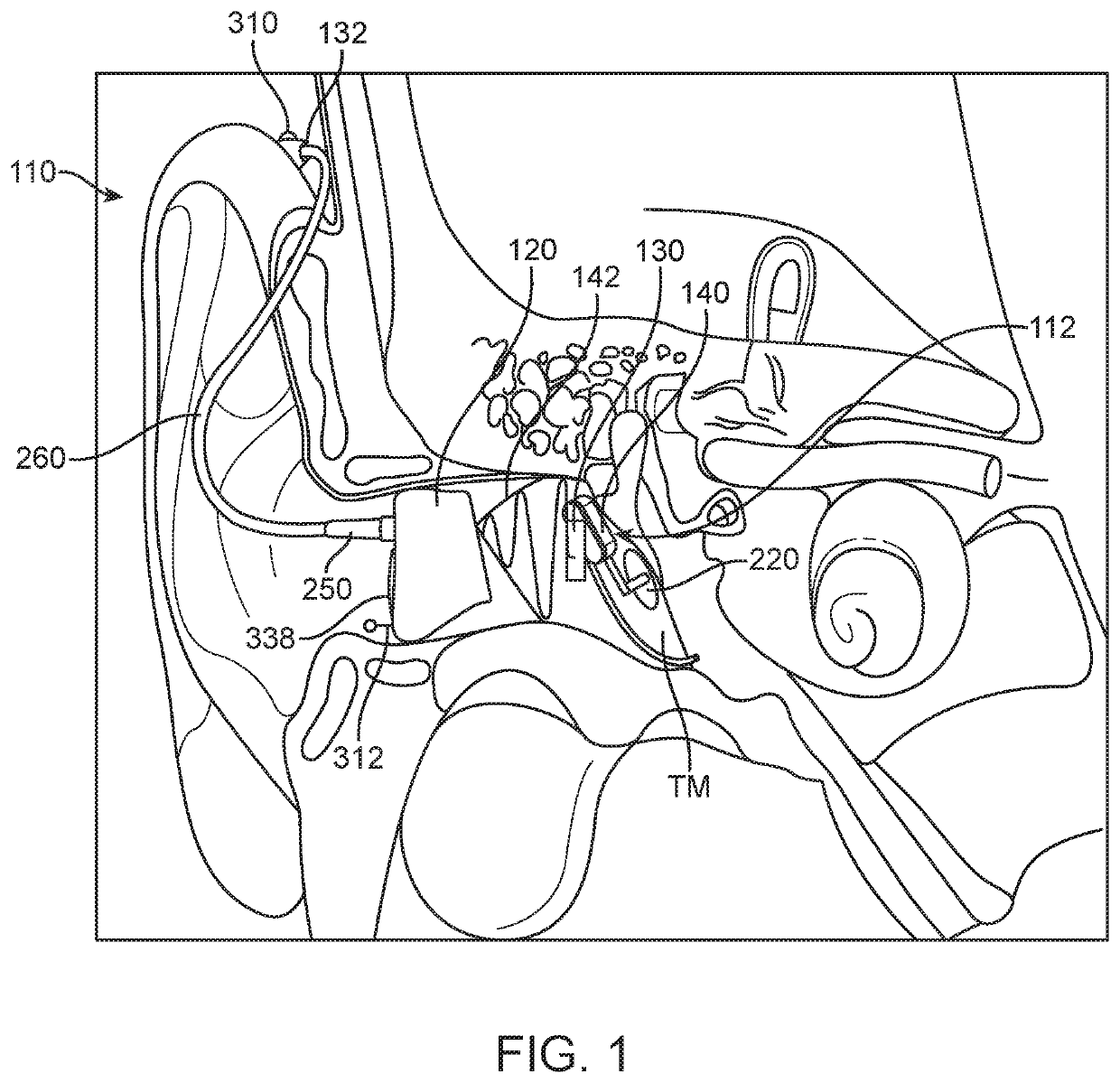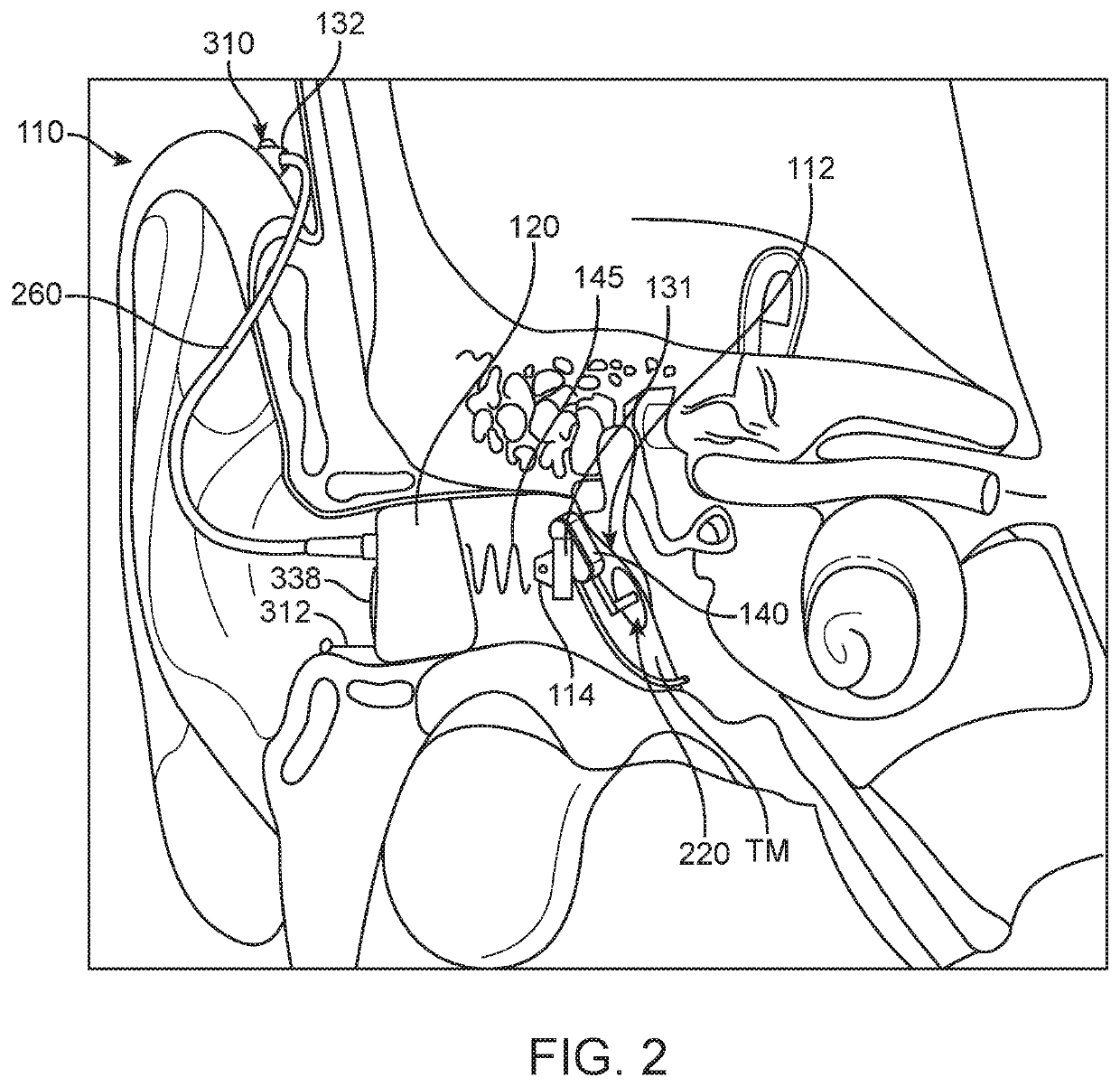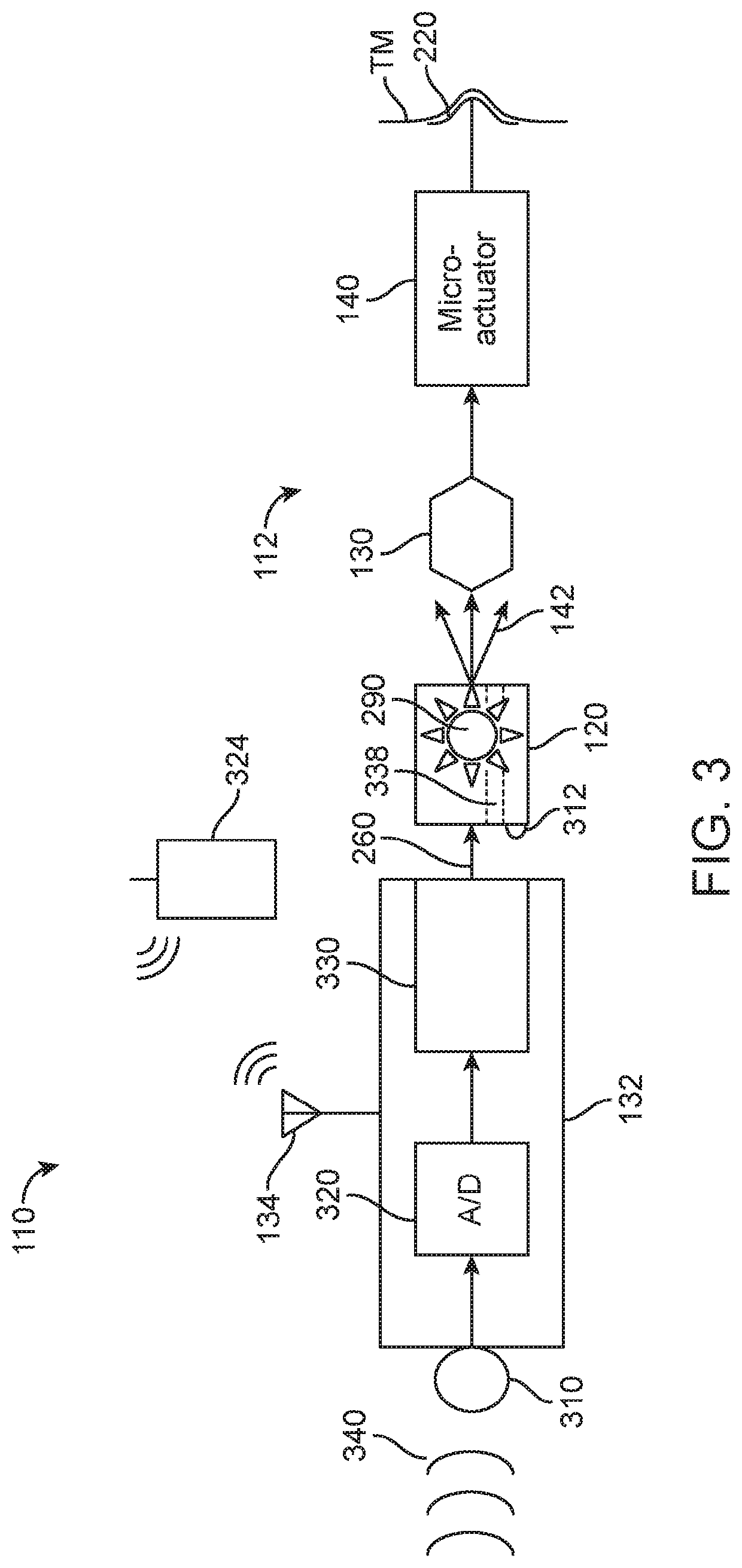Integrated sliding bias and output limiter
a technology of output limiter and sliding bias, which is applied in the field of hearing aids, can solve the problems that the use of sliding bias algorithms may generate audible artifacts for users, and achieve the effect of reducing or eliminating audible artifacts
- Summary
- Abstract
- Description
- Claims
- Application Information
AI Technical Summary
Benefits of technology
Problems solved by technology
Method used
Image
Examples
Embodiment Construction
[0015]In devices utilizing the present invention, such as contact hearing systems, when the signal level changes, specifically, when it increases, the (e.g., negative) bias level needs to increase (e.g., towards 0) in order to handle the larger input signal without saturation. If the bias level does not rise fast enough, the output signal will be distorted. Distortion may include distortion caused by saturation, where the output is clipped. In the present invention, the problem of bias levels that do not rise fast enough is addressed by a system that employs an output limiter that applies brief attenuation to prevent sudden saturation. In embodiments of the invention, the limiting level is controlled by the current bias level. In embodiments of the invention, the output limiter, rather than managing only digital saturation, and therefore employing a fixed limit threshold, precedes the sliding bias in the signal processing pipeline. In embodiments of the invention, the output limiter...
PUM
 Login to View More
Login to View More Abstract
Description
Claims
Application Information
 Login to View More
Login to View More - R&D
- Intellectual Property
- Life Sciences
- Materials
- Tech Scout
- Unparalleled Data Quality
- Higher Quality Content
- 60% Fewer Hallucinations
Browse by: Latest US Patents, China's latest patents, Technical Efficacy Thesaurus, Application Domain, Technology Topic, Popular Technical Reports.
© 2025 PatSnap. All rights reserved.Legal|Privacy policy|Modern Slavery Act Transparency Statement|Sitemap|About US| Contact US: help@patsnap.com



